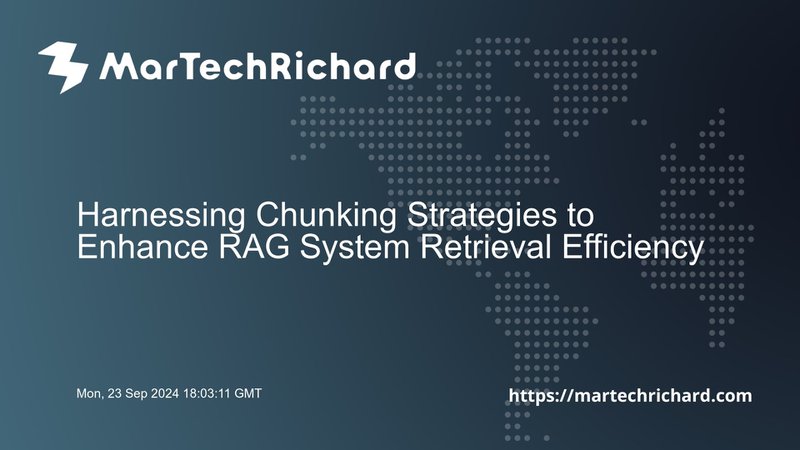
Improving Retrieval-Augmented Generation (RAG) with Advanced Chunking Techniques
In the rapidly evolving landscape of artificial intelligence, Retrieval-Augmented Generation (RAG) has emerged as a crucial technique to enhance the performance of Large Language Models (LLMs). Despite the impressive capabilities of LLMs, they often struggle with providing accurate and reliable responses due to their inherent memory limitations and sub-optimal information retrieval. This is where RAG comes into play, leveraging external knowledge bases to improve the trustworthiness of LLM responses.
Summary of the Article
The article "Breaking It Down: Chunking Techniques for Better RAG" delves into the importance of chunking in RAG systems. Chunking refers to the process of dividing text into smaller, manageable segments to improve retrieval accuracy and handle the limitations of LLMs. The article highlights two primary chunking techniques: Recursive Character Splitting and Semantic Text Chunking. While Recursive Character Splitting is straightforward but often leads to poor performance due to out-of-context chunks, Semantic Text Chunking involves analyzing the meaning and context of the text to create more relevant chunks.
Additional Insights and Opinions
- Contextual Chunk Headers: One of the most significant advancements in chunking techniques is the use of contextual chunk headers. These headers provide additional information about each chunk, such as its origin and summary, which helps LLMs understand the context better. This approach significantly enhances retrieval accuracy by preventing hallucinations and ensuring that only relevant information is retrieved.
- Dynamic Chunk Segmentation: Dynamic chunk segmentation is another innovative method that adjusts chunk sizes based on the complexity of the text. This approach ensures that chunks are neither too small nor too large, thereby maintaining a balance between relevance and context.
- Clustering as an Alternative: Clustering is an alternative to traditional chunking methods like semantic and agentic chunking. It offers a fast and cost-effective solution by grouping similar chunks together, which can improve the overall performance of RAG systems.
Discussion Questions or Prompts
Q1: How can businesses leverage advanced chunking techniques to improve their AI-driven customer service systems?
A1: This question encourages readers to think about practical applications of RAG in real-world scenarios.
Q2: What are the potential risks associated with using traditional chunking methods in RAG systems?
A2: This prompt invites discussion on the limitations of traditional methods and the need for more advanced techniques.
Q3: How can data scientists ensure that their RAG systems are contextually aware using chunking techniques?
A3: This question sparks a conversation about the importance of contextual awareness in AI systems.
What’s Next?
If you're interested in learning more about how to implement these advanced chunking techniques in your RAG systems, feel free to contact me on LinkedIn and subscribe to our newsletters via www.linkedin.com/company/martechrichard.
Source: Towards Data Science – Breaking It Down: Chunking Techniques for Better RAG
